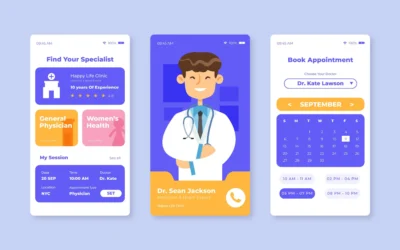In the digital age, the success of any product or service largely depends on one crucial factor: user experience (UX). A great UX isn’t just about creating something visually appealing or easy to use — it’s about understanding human psychology and building interactions that resonate with users on a deeper level. But what exactly makes users return to a platform repeatedly? Let’s dive into the psychology behind great UX and uncover the secrets to user retention.
Emotion Drives Engagement
One of the most fundamental aspects of UX design is the ability to evoke emotion. When users feel positive emotions—whether it’s joy, excitement, or accomplishment—they’re more likely to develop a connection with your product. For instance, apps like Duolingo use gamification strategies such as rewards, points, and streaks to make learning feel fun and engaging. This psychological principle, rooted in positive reinforcement, keeps users motivated and loyal.Products that deliver emotional value not only leave lasting impressions but also build trust, which is indispensable for user retention. Remember, users don’t just interact with your product—they experience it.
Cognitive Ease: Simplicity Wins
Have you ever visited a website so cluttered that it overwhelmed you? Chances are, you didn’t stick around for long. Cognitive ease—the idea that simpler things are easier and more enjoyable to process—plays a crucial role in UX design. When users find it easy to navigate your platform, their brains work less, which leads to a more pleasant experience.This is why minimalist design is trending. Platforms like Google and Instagram thrive because their interfaces are intuitive and free of unnecessary distractions. The simpler the experience, the more likely users are to stay and explore.
The Hook Model: Building Habits
Understanding user psychology includes creating habits, and Nir Eyal’s “Hook Model” is a perfect framework for this. It involves four steps: trigger, action, reward, and investment. A trigger (like a push notification) prompts action (user interaction), which is followed by a reward (the satisfaction of completing a task or discovering something new). Over time, users invest their time, data, or emotions into the platform, making them less likely to leave.Take TikTok’s success as an example.The platform’s endless scroll feature ensures that users receive a steady stream of dopamine-triggering content, reinforcing habitual use. By mastering this model, businesses can integrate psychological principles to keep users engaged.
Personalization Is Key
Human beings crave recognition and relevance. Personalization taps into this psychological need, making users feel valued. Platforms like Spotify and Netflix excel here by offering tailored recommendations based on user behavior. This perceived customization creates a sense of belonging and makes users feel like the product was “made just for them.”
Final Thoughts
UX is about more than just good design—it’s about understanding what motivates, engages, and satisfies users at a psychological level. By focusing on emotional engagement, simplifying experiences, creating habits, and personalizing interactions, businesses can craft experiences that not only attract users but keep them coming back for more.
Remember: the psychology of great UX isn’t just about meeting user needs—it’s about exceeding expectations.














